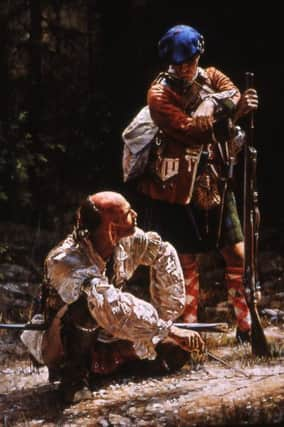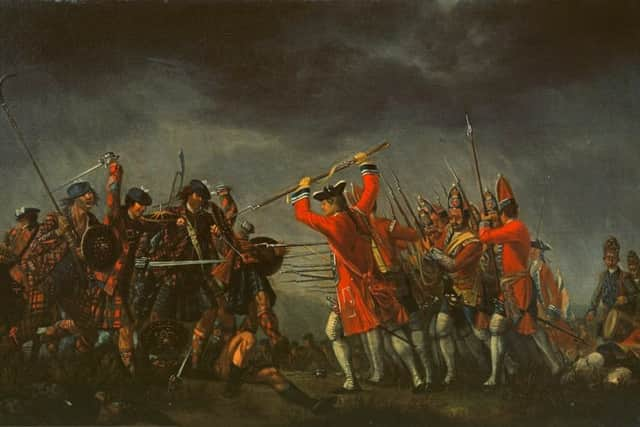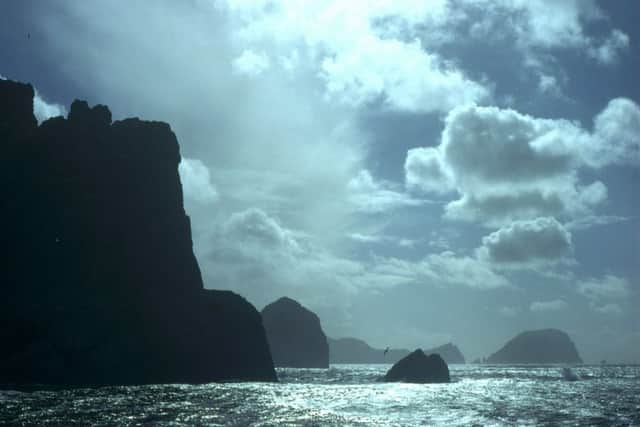The forgotten links between Highlanders and Native Americans


Both cultures were treated as tribal societies and driven from their lands by British authorities who would later romanticise the very ways of life they had destroyed.
The two peoples on the edge of Britain’s Empire underwent similar experiences at the hands of colonial powers.


Changing Times
Advertisement
Hide AdAdvertisement
Hide AdAmerican Indians and Highland Scots encountered colonisers in eras of major change on both sides of the Atlantic.
In the eighteenth century Scotland’s Gaelic speaking Highlanders and the Indians of North America were facing increased pressure and aggression from a rapidly expanding Great Britain, that was fast becoming the most powerful nation on earth.
In Scotland there was a clash between two cultures, one that was based on ancient obligations of honour and kinship and the other, an aggressive pursuit of progress and profit.


British and American governments believed the Highlands and Indian lands had to be pacified before they could be civilised. This view led to several brutal and bloody confrontations as both sets of peoples - who were fiercely independent - resisted the tide of colonialism.
Historian and author Colin Calloway explains:
“Both groups of people experienced displacement and other forms of colonial assault on their social and political structures, their cultures, language, and ways of life.
“Highlanders and Indians organised their societies around clan and kinship, occupied land communally as tribal homelands rather than as real estate, and found themselves in the way of an expanding capitalist world that stressed individual ambition, private ownership, and aggressive exploitation of resources for profit.”


While Highlanders had been travelling to American since the 1600s, one of the first major waves of migration came after the major Jacobite defeat at Culloden in 1745, when many Highlanders left (or were sent) across the Atlantic.
Scots - Indians
Advertisement
Hide AdAdvertisement
Hide AdDespite differences between clan and tribes, eighteenth century observers viewed Highland and Indian ways of life as basically the same.


They both came from rugged lands, had a strong warrior tradition within a tribal society and were used to hardship and it wasn’t long before the two cultures met.
As a result the two peoples often filled roles in colonial American society such as hunters and fur traders where interactions were common.
“The most common, extensive, and enduring interactions occurred in areas where Scots were active in the fur and deerskin trades,” says Calloway.
“The beaver trade among the northern tribes across Canada and the deerskin trade among the south eastern (USA) tribes like the Creeks, Cherokees, and Choctaws lasted long into the eighteenth century.”
Trading with Indian tribes was commonplace and relations between Highland men and Native women ranged from casual encounters to enduring relationships.
Intermarriage between Highlanders and Indians reached all across North America and entire Scots-Indian families were produced from these unions.
Advertisement
Hide AdAdvertisement
Hide AdMost of these Scots-Indians lived a quiet simple life but some played a significant role in American history.
Alexander McGillivray was the son of a Scottish trader father and a Creek-French mother. He was the dominant chief of the powerful Creek confederacy in the late eighteenth century, and played a pivotal role conducting the tribe’s foreign policies with Britain, Spain, and the United States. In 1790 George Washington even invited him to the temporary federal capital in New York City, where he negotiated the first treaty made by the United States after the adoption of the Constitution.
Scots-Indian, John Ross was the principal chief of the Cherokees during the era of Indian Removal around 1830, when the United States expelled 80,000 Indian people from their homelands east of the Mississippi to new lands in the West.
Ross led the majority of Cherokee people in opposing Removal, wrote letters and petitions, lobbied in Congress and led them in rebuilding the Cherokee Nation in Indian Territory.
Legacy
With prominent ancestors like Ross, perhaps the Highland influence is most keenly felt today among Native Americans in the Cherokee clan.
It is believed that up to a half of the Cherokee Nation could be descendants of Ludovick Grant, a laird’s son from Creichie in Aberdeenshire. Grant was captured while fighting for the Jacobite army in the battle of Preston in 1715 and was due to be hanged but he escaped death and instead was transported to South Carolina, where he was an indentured servant.
Following his release from his seven years of servitude, he began working as a trader for the Cherokee people and ended up marrying into the tribe and producing a daughter who became the ancestress of a huge proportion of Cherokees.
Advertisement
Hide AdAdvertisement
Hide AdIn 2004 Cree families from Canada traveled to the Orkney Islands tracing a 200-year genetic link back to the Scottish Islands.
Although the traditional ways of life of both peoples were all but wiped out by colonisation and industrialisation, Highland and Native American culture endured.
Even as Britain and the USA destroyed tribal societies they created romantic images of the people.
Highland culture was no longer a byword for savagery but came to represent Scottish culture as a whole in the eyes of people inside and outside Scotland.
Native Americans were transformed by paintings and literature into a heroic foe, defeated by a great nation and the barbarity of what happened to them was glossed over in favour of an imagined, nostalgic past.
Colin Calloway is the author of White People, Indians and Highlanders.
DOWNLOAD THE SCOTSMAN APP ON ITUNES OR GOOGLE PLAY
